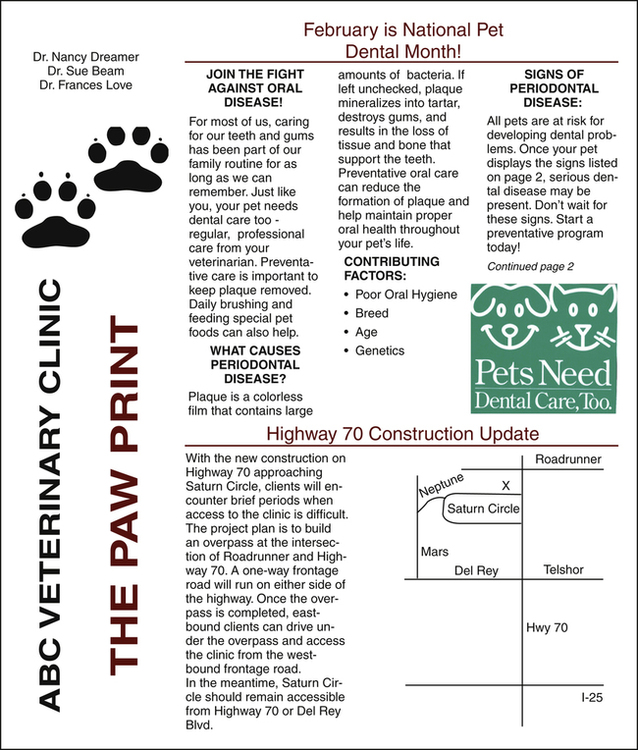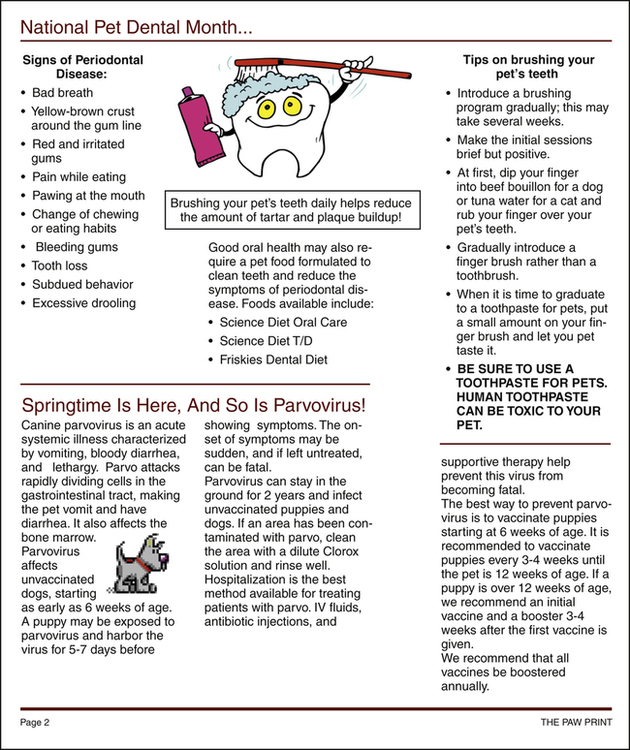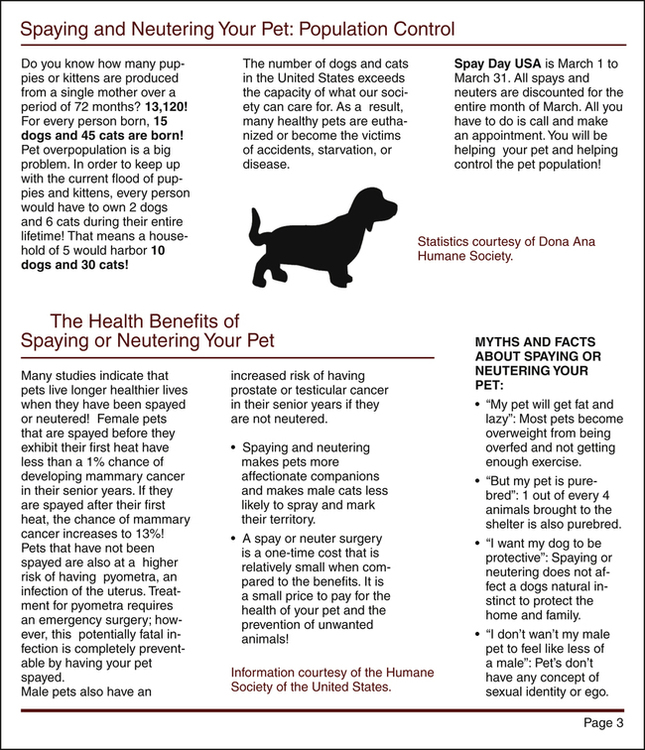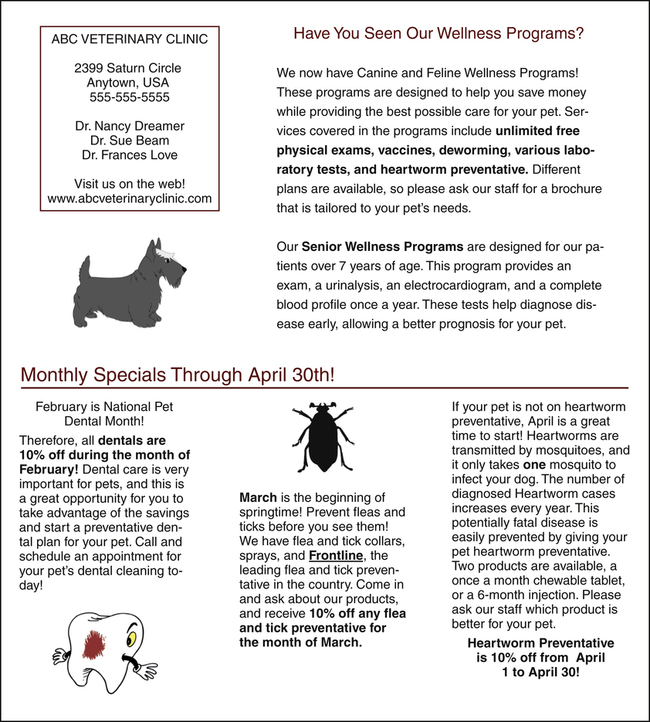Mastery of the content in this chapter will enable the reader to: • Define different methods of marketing. • Identify effective marketing techniques. • Explain and implement ethical marketing. • List effective methods for Web site development. • Describe a pet portal system. Client compliance is discussed in Chapter 11; however, the key point to remember is that client compliance is the driving force behind client retention, client recommendations, and client satisfaction. Educating the client is imperative, as previously stated. Team members must make recommendations to every client, regardless of their perception of the client’s financial situation. Establishing a written protocol of policies and procedures, along with following up on cases, will help increase client compliance. Recommendations and compliance should be tracked, allowing revisions to be made to help increase client compliance. Indirect marketing to current clients takes many shapes and values; every facet must be explored to maximize each practice’s potential (Figure 10-1). marketing is to retain current clients. This can be accomplished in several ways; reminders can be sent for different reasons, including yearly exams, vaccinations, heartworm preventive refills, or yearly bloodwork. The key to successful internal marketing is listening to the client. By listening, team members can determine their wants and needs. Practices can use tools to help implement internal marketing techniques, but team members must listen to and satisfy the needs of each client (Box 10-1). Reminders should appear professional and be free of errors. If reminders are handwritten, the writing should be clear and easy to read. Reminder cards must have the basic information included on each card: pet’s name, the date the reminder is due, and what the pet is due for. The clinic information must include the name, address, phone number, Web site, and logo of the veterinary clinic. It is also imperative to state that clients should call to make an appointment. Some clients assume that because they received the reminder, they can come any time. They are then upset at the wait time when they arrive as walk-ins. Reminders are discussed in further detail in Chapter 11 (Figure 10-2). Some reminder systems are also set up to generate second and third reminders for noncompliant clients who have not returned (Figure 10-3). Again, if reminders are printed too early, another reminder will be printed indicating the noncompliance. Clients who do not respond to reminders should be called; this will allow the staff to check on the pet, answer any concerns the owner may have, and schedule an appointment. Often, clients are extremely busy and have not taken the time to schedule an appointment and will appreciate that the practice has called. By making these calls, the practice has added a personalized touch to customer service. Customer service is centered on relationship building, connecting, and engaging with the client (Figure 10-4). Recalls should be completed for every patient that has visited the practice in the previous few days, regardless of whether it was for a yearly exam, vaccines, or an ear infection. The team member in charge of recalls can check on a patient after vaccinations to make sure there was no reaction to the vaccines. If the pet received medications, team members can follow up to ensure the pet is improving and is not having any problems with medications that were dispensed. If a pet had surgery, team members should always follow up and review the release instructions, ensuring the client fully understands them (e.g., no exercise for 7 days postoperatively). Telephone calls allow owners to ask questions that they may not have thought to ask while at the hospital or address new concerns that have arisen. Team members can also verify that the client was satisfied with the visit and schedule a follow-up exam if needed. See Chapter 11 for more information on recalls. Newsletters do not have to be fancy; simple information within the space of four pages is plenty. Too much information can overwhelm owners. Information to include should be practical and easy to understand. If diseases are a topic to be covered, they should be discussed in layman’s terms. If clients do not understand it, they will not read it and the money spent on it has been wasted. Newsletters should be fun and colorful, while maintaining the goal of educating clients, to increase client compliance (Figure 10-5). Tips for the day, quote of the week, and fascinating facts are just a few pieces of information that can be included in a newsletter. Community-service events and animal-related organizations can also be acknowledged on the last page of newsletters because half the page will be used for mailing purposes.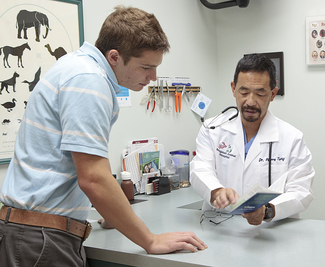 CHAPTER 10
CHAPTER 10
Marketing
INDIRECT MARKETING
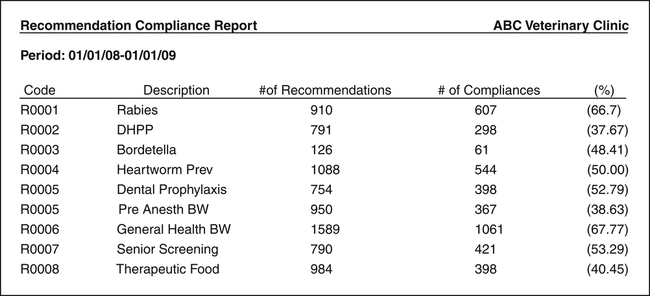
INTERNAL MARKETING
Reminders
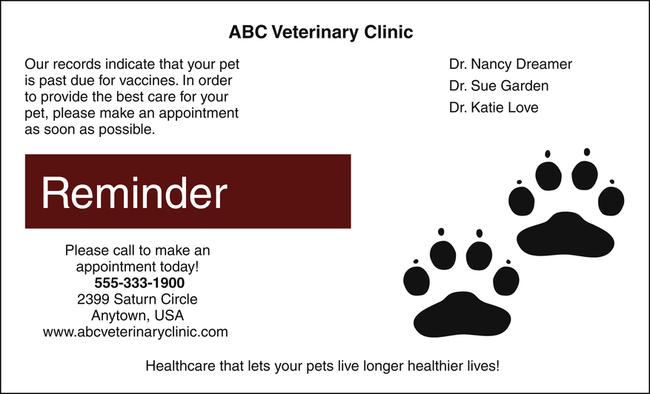

Recalls
Newsletters
![]()
Stay updated, free articles. Join our Telegram channel

Full access? Get Clinical Tree


Veterian Key
Fastest Veterinary Medicine Insight Engine

 PRACTICE POINT
PRACTICE POINT PRACTICE POINT
PRACTICE POINT PRACTICE POINT
PRACTICE POINT PRACTICE POINT
PRACTICE POINT PRACTICE POINT
PRACTICE POINT PRACTICE POINT
PRACTICE POINT What Would You Do/Not Do?
What Would You Do/Not Do? PRACTICE POINT
PRACTICE POINT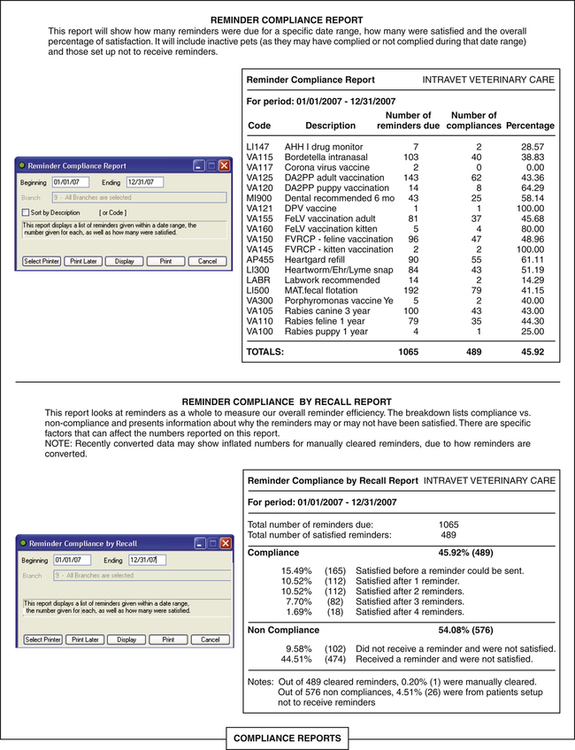
 PRACTICE POINT
PRACTICE POINT